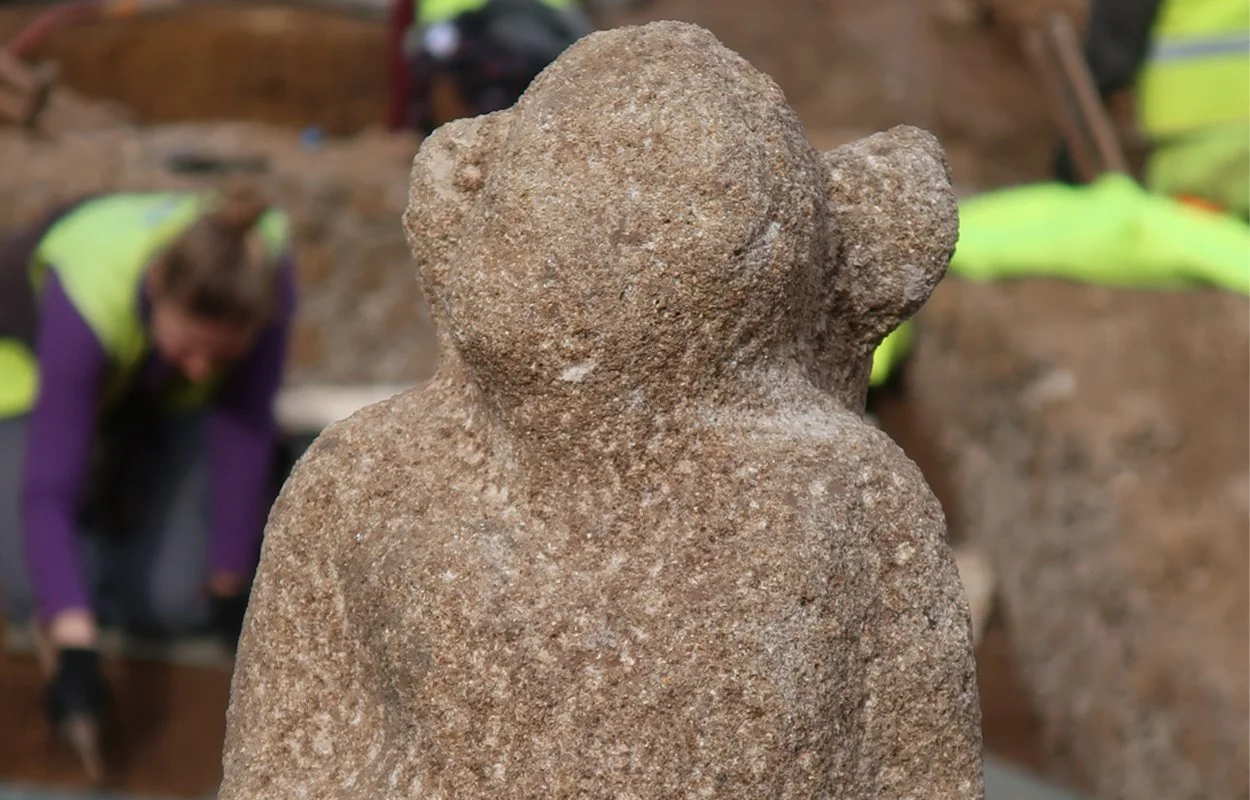Archaeologists excavating Stuttgart’s Roman fort have uncovered a statue depicting a Roman god.
During the Roman period, Stuttgart was the site of Castra stative, a large Roman fort first constructed in AD 90 to protect the villas of the Stuttgart basin and the main highway from Mogontiacum (Mainz) to Augusta Vindelicorum (Augsburg).
Excavations at the Altenburgschule (Altenburg School) School ny archaeologists from ArchaeoBW and the State Office for Monument Preservation (LAD) have revealed traces of the fort, in addition to a stone sculpture made from sandstone.
The sculpture measures 30 centimetres in height and depicts a kneeling figure with a human head, however, the lower part of the body is that of a serpent, suggesting that the figure is a fusion of a Germano-Roman deity.
According to the archaeologists, the figure was part of a large column in dedication to Jupiter, where figures of deities crowned tall stone pillars erected in public squares. Similar examples excavated from the site and locality can be found in the collections of the Württemberg State Museum
The Stuttgard Regional Council said: “Overall, it is a great stroke of luck that the newly found statue can be linked to a fragment that has long been stored in the Württemberg State Museum depot.”
“This makes it possible to reconstruct a Jupiter giant column that was once placed in the area of an important street intersection in the Roman settlement of Roman Suttgard. For archaeologists, this is another piece of the puzzle of the state capital Stuttgart’s rich Roman past.”
Header Image Credit: LAD/A. Thiel
Sources : Stuttgart Regional Council







